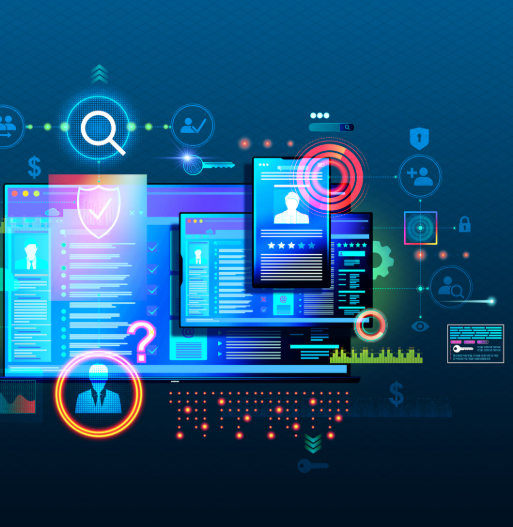Creating a Solid Cybersecurity Risk Management Strategy
- 66 Views
- admin
- 03/15/2025
- Cybersecurity
In today’s digital world, cyber threats are omnipresent and continuously evolving. Just as an explorer needs a reliable map to navigate unknown terrains, organizations require a strong cybersecurity risk management plan to guide them through the complexities of the online threat landscape. Such a plan is essential for any cybersecurity program, as it not only secures critical digital assets but also ensures that stakeholders and decision-makers understand the security measures in place. Crafting a well-thought-out risk management strategy is crucial for maintaining business continuity, enabling professionals to focus on the most pressing threats, and helping businesses stay compliant with regulations like the SEC Cybersecurity Rules.
Understanding Cybersecurity and Risk Management
Cybersecurity and cyber risk management are inseparable elements in the modern digital age. While cybersecurity focuses on safeguarding networks, systems, and data from attacks, cyber risk management is a broader strategy. It involves identifying, evaluating, and addressing risks to digital assets, offering a proactive approach to prevent and mitigate threats. This process helps protect valuable information from cybercriminals and establishes a resilient defense strategy that can adapt to emerging risks.
Mapping Out Your Cybersecurity Risk Management Plan
Developing an effective cybersecurity risk management plan begins with identifying potential threats and vulnerabilities in your system. This phase involves using tools such as vulnerability scans and penetration tests to assess your infrastructure’s weaknesses. Once these risks are identified, the next step is assessing their potential impact and the likelihood of them occurring, which helps prioritize which risks require immediate attention.
Once the risks are assessed, it’s time to implement mitigation strategies. These strategies may include enhancing security controls, improving access protocols, and developing incident response plans. Regular monitoring of these measures is essential to ensure they remain effective against evolving threats.
Many organizations choose to follow established cybersecurity frameworks such as NIST or ISO 27001. These frameworks offer a structured approach to managing cyber risks and provide best practices that organizations can apply to strengthen their defenses.
Choosing the Right Tools
To create an effective cybersecurity risk management plan, organizations should adopt various frameworks, including well-regarded standards like NIST and ISO 27001. These frameworks not only provide a systematic methodology for assessing cyber risks but also offer a toolkit of best practices for managing them. They help organizations tailor their risk management approach to meet specific industry needs, regulatory requirements, and organizational goals.
Benchmarking your risk management plan against these industry-standard frameworks is vital. This practice ensures consistency, enables progress tracking, and guarantees that the organization’s cybersecurity measures are aligned with global best practices. By adhering to these recognized frameworks, companies can demonstrate a commitment to maintaining robust cybersecurity measures and compliance with relevant regulations.
CyberStrong offers tools to assist organizations in aligning their strategies with over 60 standards, automating risk assessments, and streamlining compliance activities. These tools help businesses navigate the complexities of developing a robust risk management plan.
Strengthening Your Defenses
Risk mitigation strategies are key to minimizing vulnerabilities. Organizations should adopt practical measures such as patching security holes, implementing strict access controls, and providing security awareness training to staff members. A strong defense requires organizations to explore various risk treatment options, including risk acceptance, avoidance, transfer, or mitigation.
The most effective approach is to directly mitigate risks, reducing their likelihood and impact through security enhancements, advanced technology solutions, and improved operational practices. Platforms like CyberSaint Risk Remediation Workflow offer structured processes to guide organizations through the risk treatment phase, ultimately helping to improve their cybersecurity posture.
Maintaining Continuous Vigilance
Cybersecurity is a long-term effort, and organizations must remain vigilant. Regular monitoring and frequent updates to the cybersecurity plan are crucial to staying ahead of evolving threats.
One important tool is Continuous Control Monitoring (CCM), which assesses the effectiveness of cybersecurity measures over time. This process allows businesses to track their security posture and adjust their strategy based on emerging vulnerabilities.
CyberSaint has also developed Continuous Control Automation (CCA), a solution designed to automate compliance tasks and enhance the efficiency of risk management activities. By automating routine processes, CCA minimizes human errors and supports a consistent evaluation of security measures. This automated approach ensures that businesses remain compliant with regulatory standards while reinforcing their cybersecurity defenses.
Flexibility is crucial in a constantly changing threat landscape. Tools like CyberStrong provide valuable insights into high-performing and low-performing cybersecurity initiatives, allowing organizations to allocate resources effectively and prioritize actions based on emerging risks and regulatory requirements.
Conclusion
A well-structured cybersecurity risk management plan is essential in today’s interconnected world. By following the steps outlined above, organizations can build a robust defense system to protect their digital assets and maintain resilience against the ever-evolving cyber threat landscape. Prioritizing continuous improvement and vigilance will ensure that businesses remain secure in the face of future challenges.
Recent Posts
- How AI is Revolutionizing Architectural Design: A Look at Tools, Trends, and the Future
- Streamlining Cyber Risk Assessments Through Automation
- Understanding the Difference Between Blockchain and Distributed Ledger Technology
- Is Bitcoin Mining Still a Viable Venture in 2025?
- Exploring AI: Unveiling Possibilities, Challenges, and Future Implications


